Keisha Peterson-Anderson: A Healing Journey Through Warrior Canine Connection
 We are privileged to introduce you to U.S. Navy IT3 Keisha Peterson-Anderson, whom we met through Warrior Canine Connection’s (WCC) Mission Based Trauma Recovery (MBTR) training program in partnership with Wounded Warrior Project (WWP). We are honored to share her Warrior story.
We are privileged to introduce you to U.S. Navy IT3 Keisha Peterson-Anderson, whom we met through Warrior Canine Connection’s (WCC) Mission Based Trauma Recovery (MBTR) training program in partnership with Wounded Warrior Project (WWP). We are honored to share her Warrior story.
U.S. Navy IT3 Keisha Peterson-Anderson was working at the Pentagon on September 11, 2001—the day American Airlines Flight 77 was hijacked and crashed into the building, killing all 64 people on the plane and 125 people in the Pentagon.
Two weeks would pass before Keisha received official confirmation that Kevin, a dear friend and colleague who worked in another side of the building, had died in the horrific tragedy.
“I did what most people do, you grieve and try to move on,” said Keisha. “But I wasn’t really grieving, I was in shock. I got up and went to work every day … I look back now and wonder how I was functional. I literally went to work the day after 9/11.”
Keisha served 8 years and 10 months of active duty before separating from the Navy in late 2001. She remained in the D.C. area and became a government contractor working in various organizations in the IT and intel field. But emotionally, Keisha says she was just ‘going through the motions.’
After some persuasion from a friend, Keisha attended a Wounded Warrior Project (WWP) event. She felt great camaraderie with fellow brothers and sisters in arms, and attended multiple functions, including an Odyssey (retreat), Soldier Rides, and other local activities and outings. Slowly but surely, the events became the impetus for Keisha to start therapy.
It was at one of those local events that Keisha heard Sarah Olson from WCC speak about the organization’s MBTR training program.
“Every day on Earth is an ongoing sense of therapy,” says Keisha. “When things happen to you as a person, you can’t just go to eight therapy sessions and be healed. I was really living a half-normal life because of the trauma I experienced.”
Not only did Keisha complete the 8-week MBTR program, but so did her son, Taryn, 15.
“Being at WCC was so therapeutic to me,” said Keisha. “We were never really into dogs before, but it made me feel like I had a need, and this animal was here to help and had a need itself. The training was freaking amazing for me and my son. That training, although completed, is still soothing to me, and helping me to get over something that happened 22 years ago. It brought a lot of wonderful feelings and resolve to our every day.”
In fact, the experience, coupled with her ongoing therapy, impacted Keisha so much that she is now on the WCC waitlist for a service dog.
To learn more about WWP’s programs, visit www.woundedwarriorproject.org. For more information about WCC’s MBTR program, visit www.warriorcanineconnection.org.
###
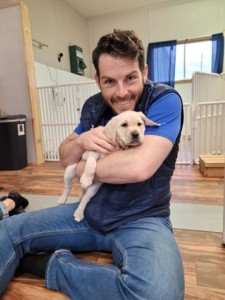 Today we introduce you to U.S. Air Force Captain (ret.) Andrew Miller. He’s a Veteran who Warrior Canine Connection (WCC) had the pleasure of meeting through its Mission Based Trauma Recovery (MBTR) training program in partnership with Wounded Warrior Project (WWP). We are honored to share his story.
Today we introduce you to U.S. Air Force Captain (ret.) Andrew Miller. He’s a Veteran who Warrior Canine Connection (WCC) had the pleasure of meeting through its Mission Based Trauma Recovery (MBTR) training program in partnership with Wounded Warrior Project (WWP). We are honored to share his story.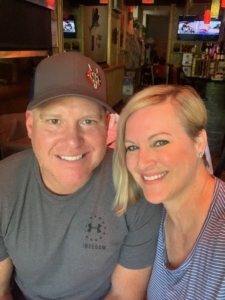 Three years ago, as she was being rushed into emergency surgery at Walter Reed National Military Medical Center during the COVID pandemic, doctors told U.S. Air Force Major (ret.) Molly O’Connell and her husband that there was a chance she may not walk again — it would depend on the severity of the damage to her spinal cord.
Three years ago, as she was being rushed into emergency surgery at Walter Reed National Military Medical Center during the COVID pandemic, doctors told U.S. Air Force Major (ret.) Molly O’Connell and her husband that there was a chance she may not walk again — it would depend on the severity of the damage to her spinal cord. 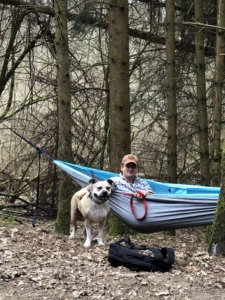 U.S. Army First Sergeant Alex Brownstein says serving in the military has been the most meaningful thing he’s done in his life. We met him through Warrior Canine Connection’s Mission Based Trauma Recovery (MBTR) training program in partnership with Wounded Warrior Project (WWP). We are honored to share his Warrior story.
U.S. Army First Sergeant Alex Brownstein says serving in the military has been the most meaningful thing he’s done in his life. We met him through Warrior Canine Connection’s Mission Based Trauma Recovery (MBTR) training program in partnership with Wounded Warrior Project (WWP). We are honored to share his Warrior story.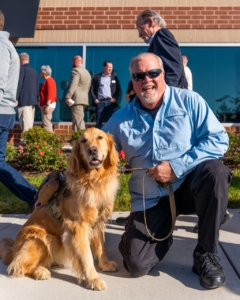
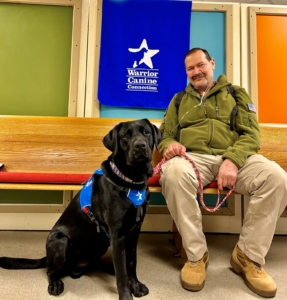 It’s not uncommon for Johnny Martinez
It’s not uncommon for Johnny Martinez 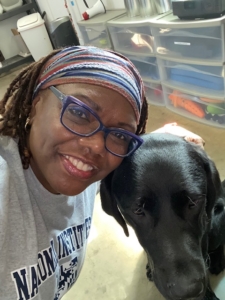 Today we introduce you to U.S. Air Force Major (ret.) April Ames-Chase. She’s a Veteran who Warrior Canine Connection (WCC) had the good fortune to meet through its Mission Based Trauma Recovery (MBTR) training program in partnership with Wounded Warrior Project (WWP). We are privileged to share her story.
Today we introduce you to U.S. Air Force Major (ret.) April Ames-Chase. She’s a Veteran who Warrior Canine Connection (WCC) had the good fortune to meet through its Mission Based Trauma Recovery (MBTR) training program in partnership with Wounded Warrior Project (WWP). We are privileged to share her story.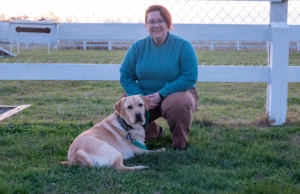 Air Force Veteran Amber Adams has always loved animals. Growing up, her family raised beagles, and now she has two cats of her own. So, when she saw an opportunity through Wounded Warrior Project (WWP) to be involved with Warrior Canine Connection (WCC) and help train future service dogs, she signed up.
Air Force Veteran Amber Adams has always loved animals. Growing up, her family raised beagles, and now she has two cats of her own. So, when she saw an opportunity through Wounded Warrior Project (WWP) to be involved with Warrior Canine Connection (WCC) and help train future service dogs, she signed up.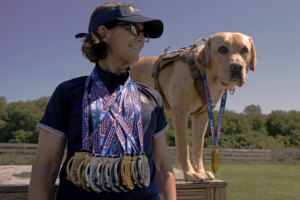 This year, Warrior Canine Connection (WCC) had one of its own participate in the Department of Defense’s annual “Warrior Games,” an athletic competition for Service Members and Veterans with visible and invisible wounds that is televised on ESPN. CAPT (Ret.) Suzanne Brown, who served in the United States Coast Guard for over 25 years and is now a Service Dog Training Instructor for WCC, had the opportunity to travel to Orlando for two weeks in August to compete. Suzanne was accompanied by
This year, Warrior Canine Connection (WCC) had one of its own participate in the Department of Defense’s annual “Warrior Games,” an athletic competition for Service Members and Veterans with visible and invisible wounds that is televised on ESPN. CAPT (Ret.) Suzanne Brown, who served in the United States Coast Guard for over 25 years and is now a Service Dog Training Instructor for WCC, had the opportunity to travel to Orlando for two weeks in August to compete. Suzanne was accompanied by 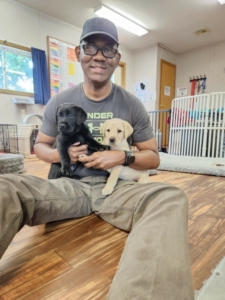 Military service is a family tradition for Retired U.S. Army Sergeant Mike Milton; his brother, sister-in-law, cousin, and uncles, all served in the Armed Forces.
Military service is a family tradition for Retired U.S. Army Sergeant Mike Milton; his brother, sister-in-law, cousin, and uncles, all served in the Armed Forces.

